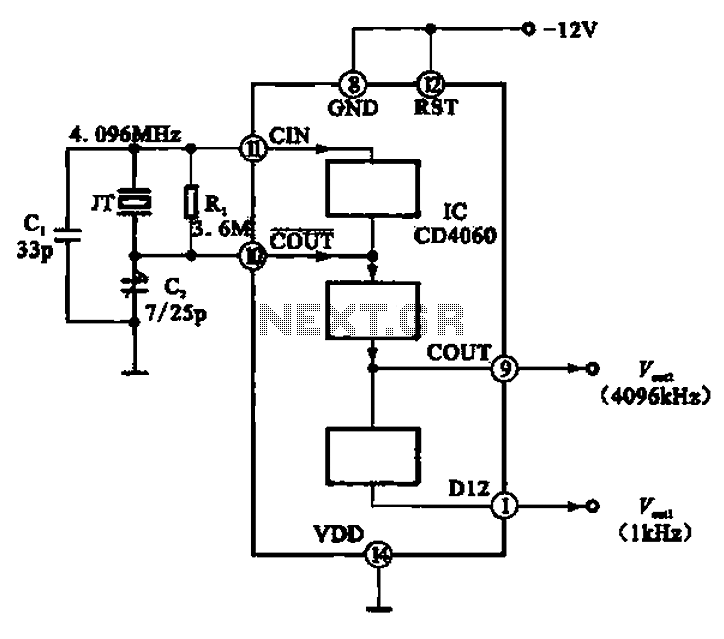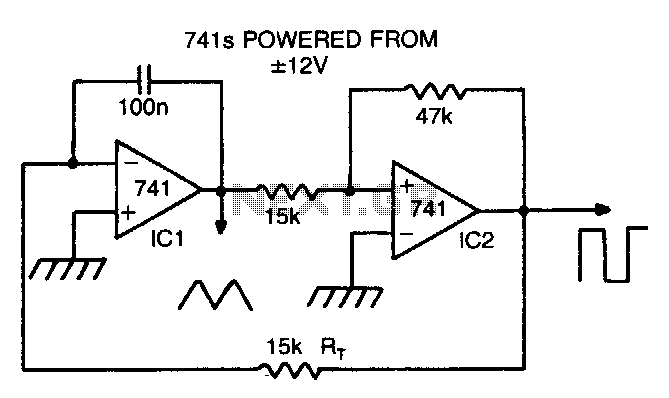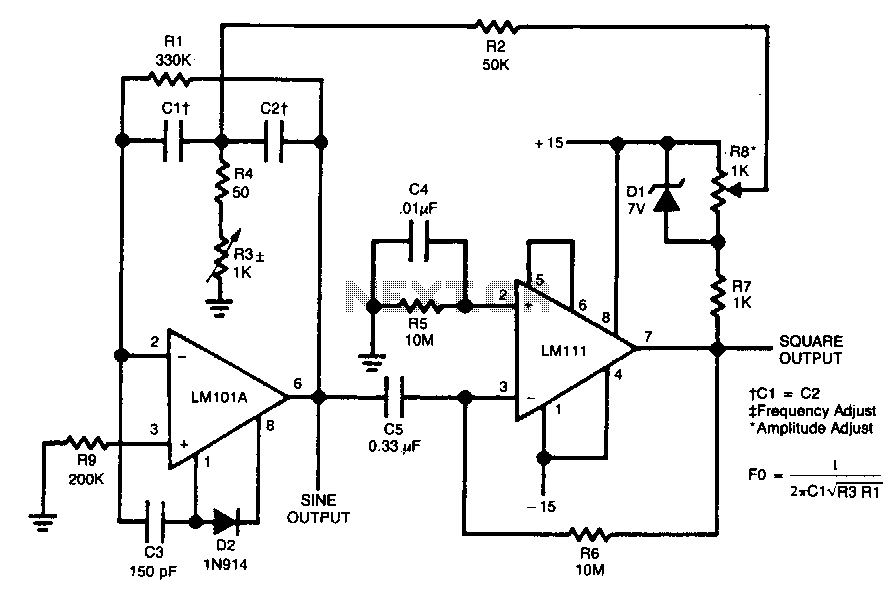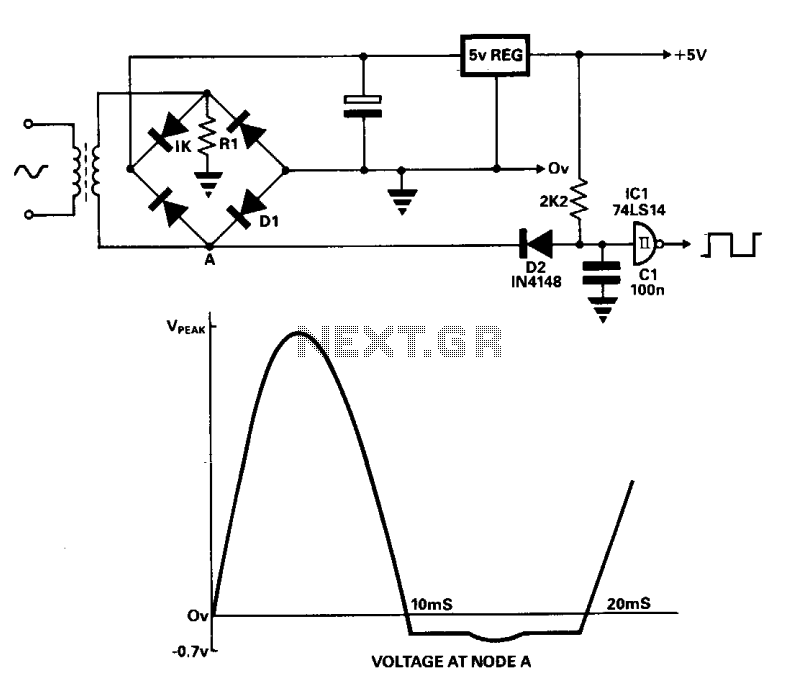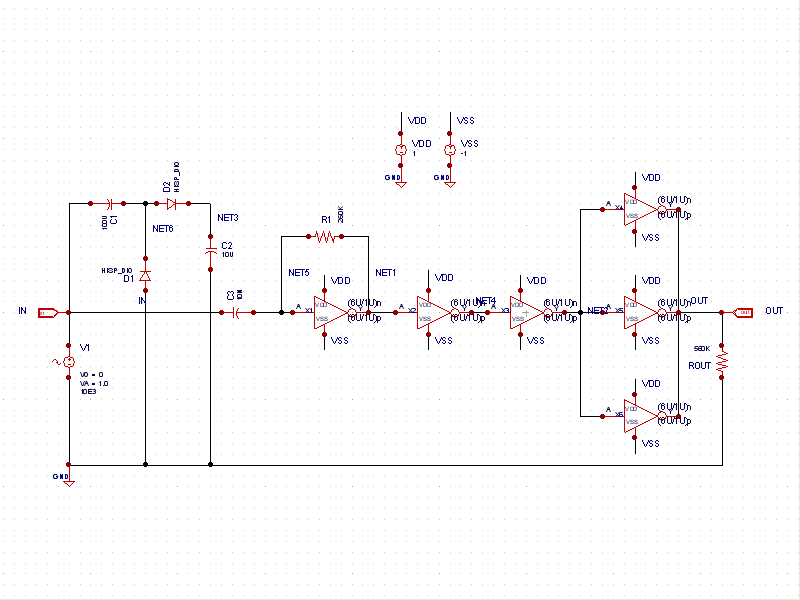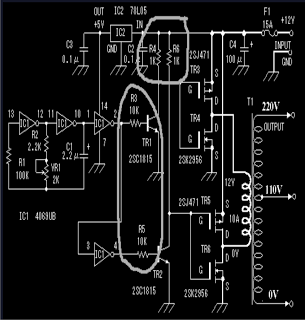
SQUARE TRIANGLE VCO
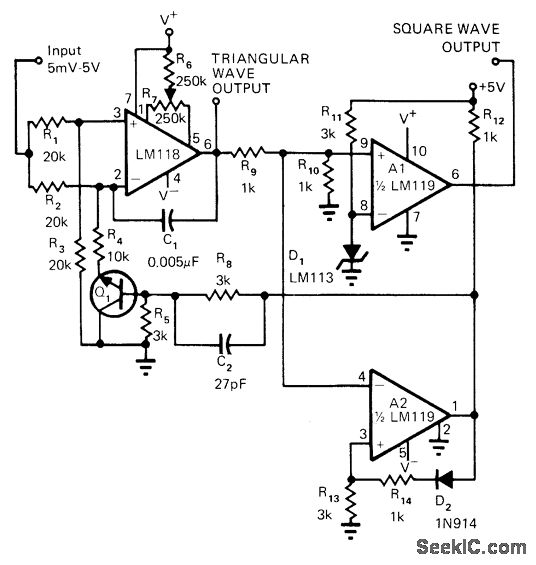
This circuit utilizes a DC control voltage ranging from 5 mV to 5 V to regulate the frequency of both square and triangle wave outputs, exhibiting good linearity. The peak value of the triangle output is accurately established at 2.44 V and 0 V by the reference voltages connected to the non-inverting inputs of the comparators. Comparator A2 is responsible for driving the load during low output states, while comparator A1 takes over when the output is high.
The circuit operates by employing two comparators to generate square and triangle waveforms. The control voltage applied to the circuit determines the frequency of these outputs, allowing for precise adjustments. The comparators function by comparing the input voltage to a reference voltage, which is set to define the desired output levels.
The triangle waveform is generated through a charging and discharging process, where the output rises linearly until it reaches the peak value of 2.44 V, at which point comparator A1 engages to drive the output high. As the voltage decreases to 0 V, comparator A2 activates, driving the load low. This switching mechanism ensures that the output maintains good linearity across the specified control voltage range.
The design of this circuit highlights the versatility of comparators, which can perform functions beyond simple voltage comparisons. By integrating these components effectively, the circuit achieves a balance between linearity and frequency control, making it suitable for applications requiring precise waveform generation. The reference voltages play a crucial role in maintaining the stability of the output levels, ensuring that the triangle waveform is consistently produced within the desired parameters.With DC control voltage of 5 mV to 5 V, circuit controls frequency of both square and triangle outputs with good linearity. Peak value of triangle output is precisely set at 2. 44 V and 0 V by reference voltages at noninverting inputs of comparators. Comparator A2 drives load for low outputs, while comparator A1 drives load when output is high. Arti cle tells how circuit works. -R. C. Dobkin, Comparators Can Do More Than Just Compare, EDN Magazine, Nov. 1, 1972, p 34-37. 🔗 External reference
The circuit operates by employing two comparators to generate square and triangle waveforms. The control voltage applied to the circuit determines the frequency of these outputs, allowing for precise adjustments. The comparators function by comparing the input voltage to a reference voltage, which is set to define the desired output levels.
The triangle waveform is generated through a charging and discharging process, where the output rises linearly until it reaches the peak value of 2.44 V, at which point comparator A1 engages to drive the output high. As the voltage decreases to 0 V, comparator A2 activates, driving the load low. This switching mechanism ensures that the output maintains good linearity across the specified control voltage range.
The design of this circuit highlights the versatility of comparators, which can perform functions beyond simple voltage comparisons. By integrating these components effectively, the circuit achieves a balance between linearity and frequency control, making it suitable for applications requiring precise waveform generation. The reference voltages play a crucial role in maintaining the stability of the output levels, ensuring that the triangle waveform is consistently produced within the desired parameters.With DC control voltage of 5 mV to 5 V, circuit controls frequency of both square and triangle outputs with good linearity. Peak value of triangle output is precisely set at 2. 44 V and 0 V by reference voltages at noninverting inputs of comparators. Comparator A2 drives load for low outputs, while comparator A1 drives load when output is high. Arti cle tells how circuit works. -R. C. Dobkin, Comparators Can Do More Than Just Compare, EDN Magazine, Nov. 1, 1972, p 34-37. 🔗 External reference
